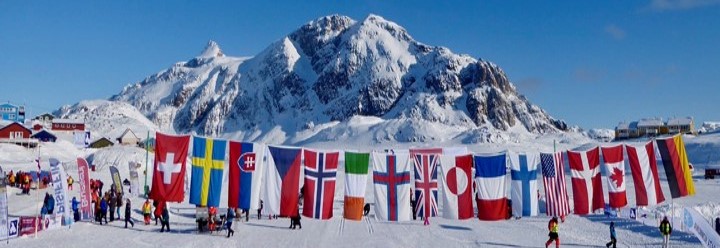Executive Summary
Source separation of wastewater means to collect two or more of the different wastewater fractions (urine, faeces and greywater) separately. Systems based on source separation offers possibilities for large water savings, recycling of resources and near zero emissions. The systems can be tailored to small (cabins, single houses) and large scale (apartment buildings, towns, cities), as well as high and low tech. Source separation offers many interesting options for hygiene improvement, cost savings and even food production in cold climate.
Background
Our excreta contain around 90% of the nitrogen (N) and phosphorus (P), more than 50% of the organic matter and the majority of the pathogens of wastewater, but it constitutes a mere 1,5 litres per day. By collecting this at the source by using a dry, urine diverting or very low flush toilet, the resources can be reclaimed and water pollution avoided. International research shows that using dry sanitation instead of traditional systems may give an equal or higher reduction of pathogens and a high reduction in risk of exposure. Dry toilets can be equipped with possibilities for urine diversion. Urine is the most nutrient rich fraction and is sterile in healthy persons. The World Health Organisation recommends 6 months of storage prior to application of urine in commercial agriculture. Faeces needs more time or more elaborate processing to become hygienised. Vacuum toilets facilitate sanitation in any type of building and reduce the water consumption to 0.2 – 1.5 l/flush. Source separation facilitates decentralised collection of excreta as well as many options for decentralised treatment of greywater (water from washing, showers and kitchen). Thus the need for a secondary piping system, that can be extremely expensive in cold climates, is reduced. Co-processing of organic household waste and excreta can yield biogas, fertiliser and soil amendment products. Biogas production combined with superinsulated greenhouses can open up year around vegetable production in cold and even arctic climates.
Learning objectives
At the end of this lecture students will have:
- knowledge of what a sanitary system based on source separation is
- an understanding of “circular economy options” of a sanitary system based on source separation
- knowledge of the possibilities and limitations of a sanitary system based on source separation in cold/arctic conditions
Lecture
A Review of Wastewater Handling in the Arctic with Special Reference to Pharmaceuticals and Personal Care Products (PPCPs) and Microbial Pollution
Source separation of urine
Sustainable wastewater management in urban areas
“This chapter discusses briefly some sustainable solutions to the wastewater treatment problem in urban areas. The emphasis is given to systems where wastewater is source separated. Systems which source separation opens the possibility of producing fertilizer and energy from wastewater and organic waste, hence, near complete recycling of wastewater and waste resources is made feasible. These are all important factors when evaluating sustainability”.
JENSSEN, P.D., GREATOREX, J. AND WARNER, W.S. (2004): Sustainable wastewater management in urban areas. Kurs WH 33, Konzeptionen Dezentralisierter Abwasserreinigung und Stoffstrommanagement. Universitat Hannover, Weiterbildendes Studium Bauingenieurwesen Wasser und Umwelt. URL [Accessed: 27.01.2019] PDFDecentralized urban greywater treatment at Klosterenga Oslo
«In Ruswil, a natural gas derisification plant is being operated as a part of the European gas-pipeline network. The plant generates more than 100 GWh (1 GWh = '000 kWh) waste heat per year. Options to use this energy to heat villages failed due to cost reasons. Today 40 GWh of the waste heat are turned into ecologically sound electricity and up to 30 GWh will be used for the production of tropical fruit and fish as a contribution to substitute energy consuming imports».
JENSSEN, P.D. (2005): Decentralized urban greywater treatment at Klosterenga Oslo. In: BOHEMEN, H. v. (ed.) Ecological engineering, Bridging between ecology and civil engineering. Delft (The Netherlands): Æneas Technical Publishers, Chapter 5, 5.6.5, pp 84-86. URL [Accessed: 27.01.2019] PDFDesign and performance of ecological sanitation systems in Norway
«At present municipalities as well as the Agricultural University of Norway is considering conversion to a fully recycling and watersaving sanitation system. This interest has been rised through successful demonstration projects where both the toilet and the greywater fraction is treated. The greywater is treated to swimming water quality. New energy efficient equipment for fertilizer application is developed and the yields using liquid organic fertilizer is comparable to the yields using mineral fertilizer».
JENSSEN, P.D. (2002): Design and performance of ecological sanitation systems in Norway. Proceedings of the First International Conference on Ecological Sanitation, Nanning, China. URL [Accessed: 27.01.2019] PDFA complete recycling (ecosan) system at student dormitories in Norway
«The Agricultural University of Norway is pioneering environmentally safe solutions to organic waste and wastewater treatment. In 1997 a first generation recycling system based on ecological engineering principles was built serving 48 students. The system reduces water consumption by 30%, it nearly eliminates pollution, and it produces a valuable plant fertilizer and soil amendment product from the waste material».
JENSSEN, P.D. (2005): A complete recycling (ecosan) system at student dormitories in Norway. In: BOHEMEN, H. v. (ed.) Ecological engineering, Bridging between ecology and civil engineering. Delft (The Netherlands): Æneas Technical Publishers, Chapter 5, 5.6.4, pp 81-83. URL [Accessed: 27.01.2019] PDFDirect Ground Injection of livestock waste slurry to avoid ammonia emission
«The aim of the project was to improve the slurry injection techniques for injecting animal waste slurries into the soil under Norwegian conditions. A new slurry application technique for grassland was therefore developed, by adapting well known methods of injecting a fluid into a solid or porous material. Ammonia emission was reduced as compared with application through ordinary broadcasting, and with band spreading. The emission was also reduced if water was added to the slurry, or if the slurry solids were separated from the liquid before application».
MORKEN, J. and SAKSHAUG, S. (1998): Direct Ground Injection of livestock waste slurry to avoid ammonia emission. Nutrient Cycling in Agroecosystems 51 (1), 59–63. URL [Accessed: 27.01.2019] PDFLecture: WWT in Cold Climate - Source seperating Systems
Video lecture (with audio) on source seperating systems for the treatment of wastewater, held by Prof. Petter Jenssen from the University of Life Sciences, Norway.
Exercise Sisimiut Greenland
This exercise is challenging you to find a sustainable solution for the wastewater handling in Sisimiut. Imagine you should plan the development of the sewage systems over a period of at least 10 years maybe 20-30 years. Maybe you will conclude that the current wastewater handling is good enough given the situation in Sisimiut or maybe you think that the wastewater handling could be optimized to yield a more sustainable system; ie: a system that has less negative impact on the environment, where you utilize or recycle some of the resources in wastewater and organic household waste and even produce vegetables in Sisimiut? Maybe you can produce energy or other useful products from the wastewater and waste resources. Remember there is no right answer, but there are many different systems and/or combination of systems that can be considered.
You should use what you know about the current wastewater handling and infrastructure as a base. With this background suggest what type of treatment is needed before discharge. Then try to outline a system or systems that can meet your requirements.
JENSSEN, P. D. Exercise Sisimiut Greenland. PDF

